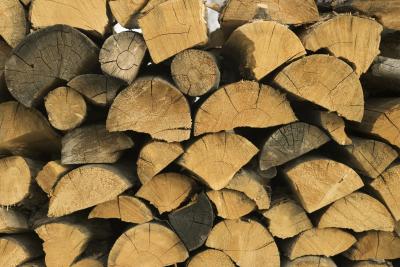
Wood gas generators work by converting wood or other plant fiber into a flammable gas. Wood or other biomass material is heated to high temperature in an anaerobic or low oxygen environment so wood is converted into a pyrolitic gas. The hot gas is filtered and cooled to remove soot and water and then fed to an internal combustion engine as fuel.
Using wood and other biomass materials is an old technology. Gasification generators reduced wood and coal as fuel for street lights and stationary engines in the late 19th Century and wood gas powered vehicles during World War II.
The first step in the process is loading the combustion chamber with wood chips or some other biomass and heating it. As the heat reaches 450 degrees Fahrenheit, pyrolitic gases are released and charcoal is formed. By the time the wood is heated to 800 degrees Fahrenheit, it is nearly completely converted into charcoal.

The charcoal sinks down into the second chamber of the gas generator, the oxidation hearth. Air is drawn into the hearth and the charcoal is burned to provide the heat that burns the wood in the upper chamber and the creation of the hydrocarbon gas in the lower chamber. When connected to an internal combustion engine, the motion of the pistons creates the draft to feed air into the system.
The charcoal burns at over 2000 degrees Fahrenheit and releases carbon monoxide and carbon dioxide. During this time, nearly all the oxygen is burned away and the chemical reactions occurring between the carbon and oxygen generate even more heat. The charcoal has now become a glowing hot char.

The next phase of the gasification process is reduction. The glowing char falls down through the hearth to the reduction chamber. The reduction chamber resembles a sieve with extra large holes the ash falls through.
The gases being given off by the glowing char are carbon monoxide and hydrogen. It is these gases that will be pulled away to power the internal combustion engine. The gases can also be piped away to a furnace to be burned for heat.
The hot gases are next drawn up to a precipitate type cooler where they cool and expand. This is important because the cooling gas will condense any remaining water vapor and tars. The cooling vapors also release any fine ash they might contain.
Next stop for the wood gas is a fine mesh filter where any last ash or dust is separated out. The wood gas is then mixed with air in the engine carburetor and burned in the cylinders of the engine.
